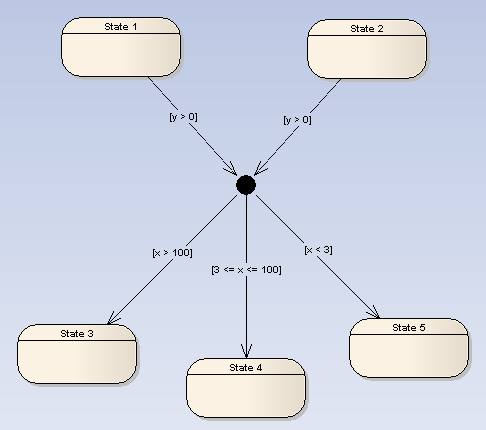
Junction pseudo-states are used to design complex transitional paths in State Machine diagrams. A Junction can be used to combine or merge multiple paths into a shared transition path. Alternatively, a Junction can split an incoming path into multiple paths, similar to a Fork pseudostate. Unlike Forks or Joins, Junctions can apply guards to each incoming or outgoing transition, such that if the guard expression is false, the transition is disabled.
The following example illustrates how guards can be applied to transitions coming into or out of a Junction pseudo-state.

Toolbox Icon
![]()
OMG UML Specification
The OMG UML specification (UML Superstructure Specification, v2.0, p. 471) states:
"junction vertices are semantic-free vertices that are used to chain together multiple transitions. They are used to construct compound transition paths between states. For example, a junction can be used to converge multiple incoming transitions into a single outgoing transition representing a shared transition path (this is known as an merge). Conversely, they can be used to split an incoming transition into multiple outgoing transition segments with different guard conditions. This realizes a static conditional branch. (In the latter case, outgoing transitions whose guard conditions evaluate to false are disabled. A predefined guard denoted "else" may be defined for at most one outgoing transition. This transition is enabled if all the guards labeling the other transitions are false.) Static conditional branches are distinct from dynamic conditional branches that are realized by choice vertices."


